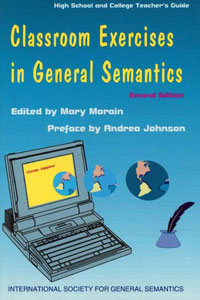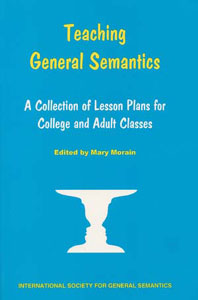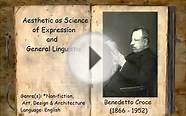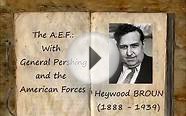General semantics high school

Want to Teach General Semantics?
You will find the following resources helpful when designing lessons for classes in general semantics. Skilled teachers in general semantics have contributed teaching guides for students of all ages, syllabi, course materials, tutorials, exercises, and handouts. Also included are links to books that aid in the instruction of general semantics.
“Lecture Notes on Teaching General Semantics”
by Lance Strate, Ph.D.
This excellent and detailed outline used for teaching general semantics Dr. Strate employed for many years in his course introducing students to the field of communication. In this outline, he presents general semantics “on its own terms, as a separate topic and unit.” Of note, Dr. Strate bridges general semantics to other communications fields, making for a contextual understanding of general semantics in the field of communication.
A Continuing Education Guide to Teaching General Semantics
by Martin H. Levinson, Ph.D.
This guide contains twelve continuing education lessons in general semantics. Each lesson includes an Introduction (for the teacher) of the basic GS ideas to be presented, a Motivation to begin the lesson, and Suggested Activities for students. Lessons can be combined or abbreviated depending on the time constraints of the course and wishes of the instructor.
 “Awareness & Action: A General Semantics Approach to Effective Language Behavior”
“Awareness & Action: A General Semantics Approach to Effective Language Behavior”
by Mary P. Lahman, Ph.D.
This ebook aims at increasing awareness of faulty language behavior and motivating daily action to correct such behavior. In the first two sections of this text, Dr. Lahman shows how general semantics can be used as a systematic inquiry into language behavior. In the remaining four sections, Dr. Lahman follows with an application of these formulations, including case studies.
“Twelve General Semantics Lessons for Middle School Students”
by Martin H. Levinson, Ph.D.
This curriculum provides twelve science-based general semantics lessons for middle school students. It was developed as part of a research study that used the ideas and techniques of general semantics to reduce feelings of alienation among seventh-, eighth-, and ninth-grade students.
“Seminar: Language, Thought and Culture”
by Eva Berger, Ph.D.
This syllabus (in Hebrew) outlines a seminar that deals with the relationship between symbols, brain, meaning, language, thought, and culture. The first goal of this seminar is to stimulate students’ thinking about the ways in which symbols, especially language, are involved in the process of human thinking and behavior. The second goal is to help students hone their critical thinking, which is closely related to language.
“Cognitive Evaluation and Communication: A K-12 Experiential Communication Curriculum Built upon General Semantic Concepts”
by Frank Gastner, et al.
This curriculum (available online) contains a series of lessons and exercises utilizing a number of basic general semantics formulations. These lessons are designed to accommodate students from kindergarten through twelfth grade. The format introduces students to general semantics formulations pertinent to them in age-appropriate lessons.
blogging and making money michigan education trust bad education to blog or not to blog zen cart blogging blogging comes under which category blog as a service blog contra las cuerdas blogging over blogging books guild education careers blog before we die pro blogging idea blogging behind the scenes blogging beyond the classroom progressive education blog biz bootcamp hunters education getting into blogging blog into the gloss blogging on google blog topics during coronavirus the education of charlie banks zoom education bad education 2004 indiana department of education jobsYou might also like











